Subscribe now to get notified about IU Jharkhand journal updates!
The Exploratory Study on Influence of Social Media Marketing On Automobile Industry Performance
Abstract :
The automobile industry is critical to a country's overall economic success. In India, the two-wheeler automotive business has not undergone social media marketing operations. In today's environment, social media is ubiquitous among customers, therefore utilising a larger platform for firm marketing activities would be a fantastic opportunity. This research was conducted to identify present and future uses of social media in marketing and promotional operations in the two-wheeler category. Market research was undertaken in Ahmedabad, Vadodara, Surat, and Rajkot to assess social media knowledge, present utilisation in two-wheeler marketing, consumer preferences towards various kinds of social media, and so on. Various statistical approaches were utilised to examine media habits and consumer preferences for two-wheeler customers.
The findings indicate a lack of social media presence in the two-wheeler market. Social media preference was discovered to be more popular among the younger generation. The study's beneficiaries would include academics and researchers who would get insights into the marketing sector such as principles of marketing research, statistical testing ideas, and social media marketing concepts, among others. This study will also aid two-wheeler automotive firms since they can now refer to the early understanding of social media platforms for launching social marketing campaigns to get greater market share. This will also make it easier for companies to build business plans and advertising campaigns based on social media platforms. Future study might be conducted with a greater sample size and geographic coverage. It is also possible to do research on a specific social media campaign.
Keywords :
Social Media, Business Performance, automobile industry, facebook, twitter, Instagram Marketing and customerIntroduction
Social media has transformed how businesses sell their goods and services. Social media has created a platform for car firms to reach a larger audience, communicate with potential consumers, and enhance brand awareness in the automotive sector. This post will go over how to use social media to promote your vehicle business and develop a successful automotive social media marketing plan.
In recent years, there has been a significant trend towards social media marketing in the automobile business like car and two wheeler. With more people than ever spending time on social media, it's no wonder that automobile companies are using it to sell their products and services. Social media allows you to reach a larger audience while engaging with potential consumers more directly and interactively.
Social Media for Automotive Companies
Social media may help automobile companies interact with their target audience, create connections, and advertise their products and services. However, it is critical to recognise that social media is not a one-size-fits-all answer. Each social media site has its own set of features, strengths, and weaknesses. To develop an effective social media marketing plan for your automobile company, you must first understand the strengths and limits of each platform.
1.2 Social Media Marketing
The Advantages of Automotive Social Media Marketing
Using social media for automotive firms has various advantages. Among these advantages are:
1. Increased brand awareness: Social media allows automotive firms to access a larger audience and boost brand presence.
2. Improved consumer engagement: Social media helps businesses to communicate more directly and interactively with new and existing customers.
3. Marketing that is less expensive: Social media marketing is less expensive than traditional marketing strategies.
4. Improved customer loyalty: Social media may aid in the development of better customer relationships and the enhancement of consumer loyalty.
5. More website traffic: Social media may increase visitors to your website, which can lead to more sales and revenue.
Facebook Automotive Social Media Marketing
With more than 2.8 billion active members, Facebook is the most popular social networking site on the planet. Facebook may be used by automotive firms to advertise their goods and services, interact with clients, and raise brand recognition. Facebook offers a variety of tools that car firms may employ, such as:
- Facebook Pages: Companies may set up a Facebook Page to market their brand and communicate with both current and new clients.
- Facebook Ads: Automotive companies may use Facebook Ads to advertise their goods and services to a larger audience. Instagram
- Instagram Business Profile: Organisations may set up a business account on Instagram to advertise their namesake and merchandise.
- Instagram Stories: Organisations may use Instagram Stories to interact with consumers, advertise products, and post behind-the-scenes material.
- Instagram Ads: Automotive companies may use Instagram Ads to advertise their goods and services to a larger audience. Twitter
- Twitter Business Profile: Organisations can set up a Twitter Business Profile to advertise their namesake and goods.
- Twitter Ads: Automotive companies may use Twitter Ads to advertise their goods and services to a larger audience.
- Twitter Chats: Organisations may take part in industry-related Twitter Chats to interact with clients and offer their knowledge.
Instagram is a visual social media site where users may post both photographs and videos. It's a fantastic platform for automotive firms to present their goods and services, as well as to interact with both existing and new clients. Instagram has a number of tools that car firms may utilise, including:
Tweets are a type of brief communication that users may share on the Twitter network. Twitter may be used by automotive firms to build their brand, interact with consumers, and disseminate news and updates about the sector. The following are some of the capabilities that Twitter offers to car businesses:
Joo, Y., & Yoo, G. (2021) examined that sought to comprehend the trend of automotive consumption through the use of big data from social media, such as what keywords are associated with autos and how consuming behaviours in developed and emerging nations are represented. This study validated and contrasted the findings to assumptions that automotive choices would change due to differences in living standards, geographical features, culture, and relevant legislation and policies.
Asghar, Z., Ali, T., Ahmad, I., Tharanidharan, S., Nazar, S. K. A., & Kamal, S. (2019) assessed that the automobile industry is very competitive, and suppliers, vehicle firms, must carefully analyse and handle consumer opinions with a defined end objective in order to gain a competitive advantage. It is a wonderful approach to analyse consumer opinions using data from social media sites; moreover, it may assist vehicle firms better their marketing goals and objectives. This paper gives a sentiment analysis on a case study of the car sector. Sentiment analysis and text mining are used to analyse and dissect unstructured Twitter messages in order to determine the polarity of automotive classes.
Svobodová, L., Černá, M., Olejniczak, J., & Bednarska-Olejniczak, D. (2019) looked into the industries recognise the significance of that marketing tool and are creating new methods and investing in popular social networks. The purpose of this article is to highlight three manufacturers and major participants in the automobile industry in the Czech Republic in the sector of personal automobiles in relation to the usage of social networks. The sub-goal is to demonstrate how businesses decide on the appropriate blend. Facebook, YouTube, Twitter, and Instagram are the most popular social networks among automakers. Not all of the firms described have ties on the platforms' popular social networks.
Devi, S (2015) This research paper examines the many components of social media marketing, as well as the reasons for its development and its presence in the Indian automobile sector. By examining many factors, it is possible to infer that the automobile sector is thriving, and social media marketing is assisting it in a sophisticated method. Though it has not been determined whether there is a positive link between sales generation and fan growth, its benefits cannot be denied, including the creation of brand awareness, consumer loyalty, marketing-mix feedback, product introduction assistance, and many more. Social media marketing is an absolute need.
3. IMPORTANCE OF THE STUDY
The automobile industry is going through a lot of change, which is being sparked by, among other things, shifts in consumer preferences, environmental measures, and the age of internet commerce. In all facets of the automobile sector, particularly in marketing and sales, the subject of digitization has long since been pertinent. For many significant automotive industries, centralizing the wide range of communication channels—such as Facebook, Twitter, and Instagram—via one central tool, such as facelift, has been essential.
4. STATEMENT OF THE PROBLEM
This study is concentrated only the role of film industry on smm and the sample size is only 121. This study is one of the reviews for future researchers. The researchers concentrated on smm on automobile business and their performance. Respondents, who are less familiar with internet and latest technology developments, may not be able to give appropriate answers during survey. The future researchers can do the research on social media marketing rules and regulations of film industry. No deep research has been conducted in this area.
5. OBJECTIVES OF THE STUDY
The research study has accomplish the following objectives such as
To comprehend the notion and investigate the existing state of social media utilization in the business..
To business wants to learn about its customers' attitudes regarding social media usage
6. METHODOLOGY
The survey was able to draw in 125 random respondents; however, only 121 respondent’s answers could be analyzed to fit the age group focus of the study. Use KMO and Bartlett test, Anova, Cronbach's Alpha and Confirmatory Factor Analysis
7. HYPOTHESIS OF THE STUDY
H1: There is a significant difference in preferences towards social media marketing for different occupations.
H2: There is a significant difference in social media rating for male & female respondents
8. DATA ANALYSIS AND INTERPRETATION
8.1 Exploratory factor analysis
KMO and Bartlett test of Sphericity check the sample adequacy and it quantifies the inter-correlation between the variables.
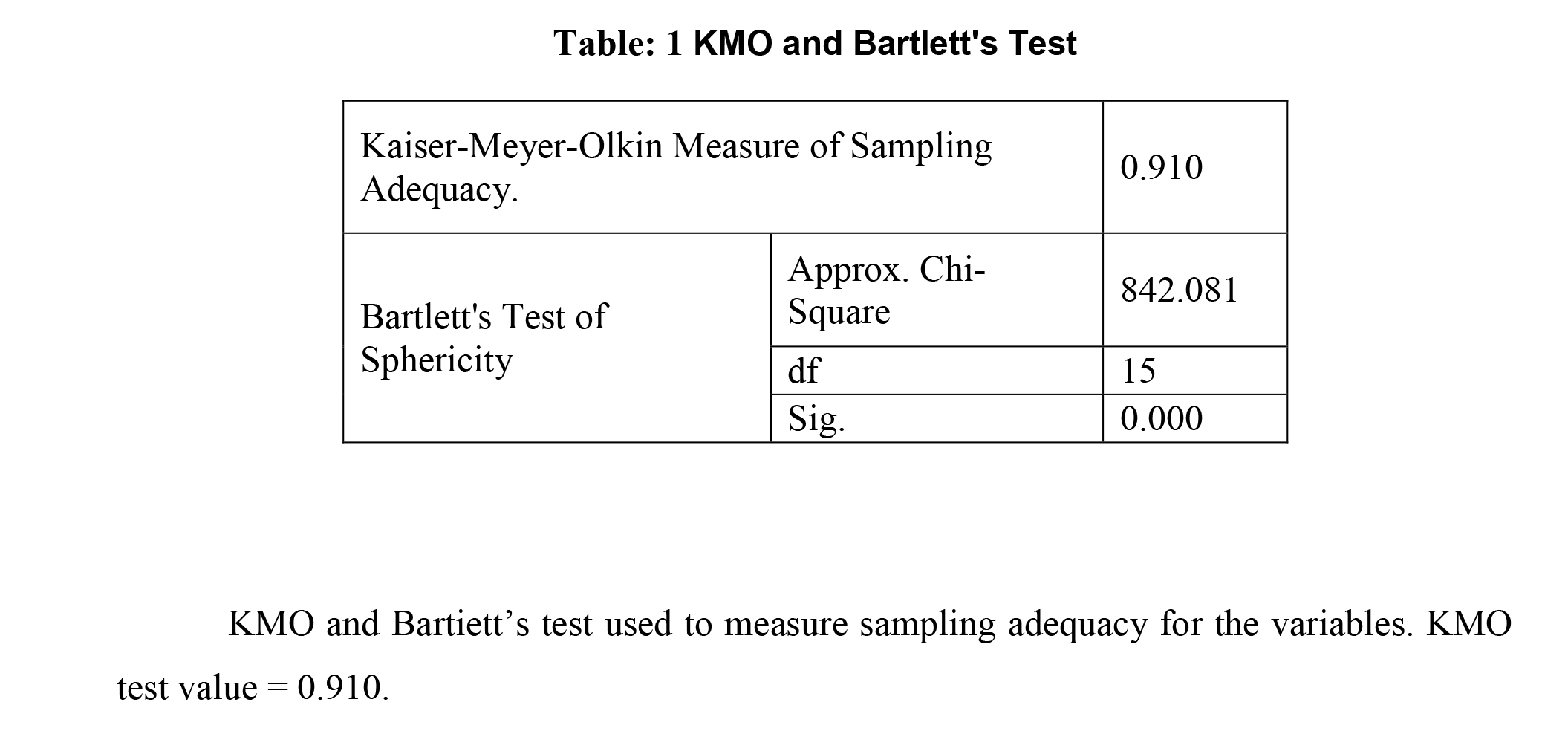
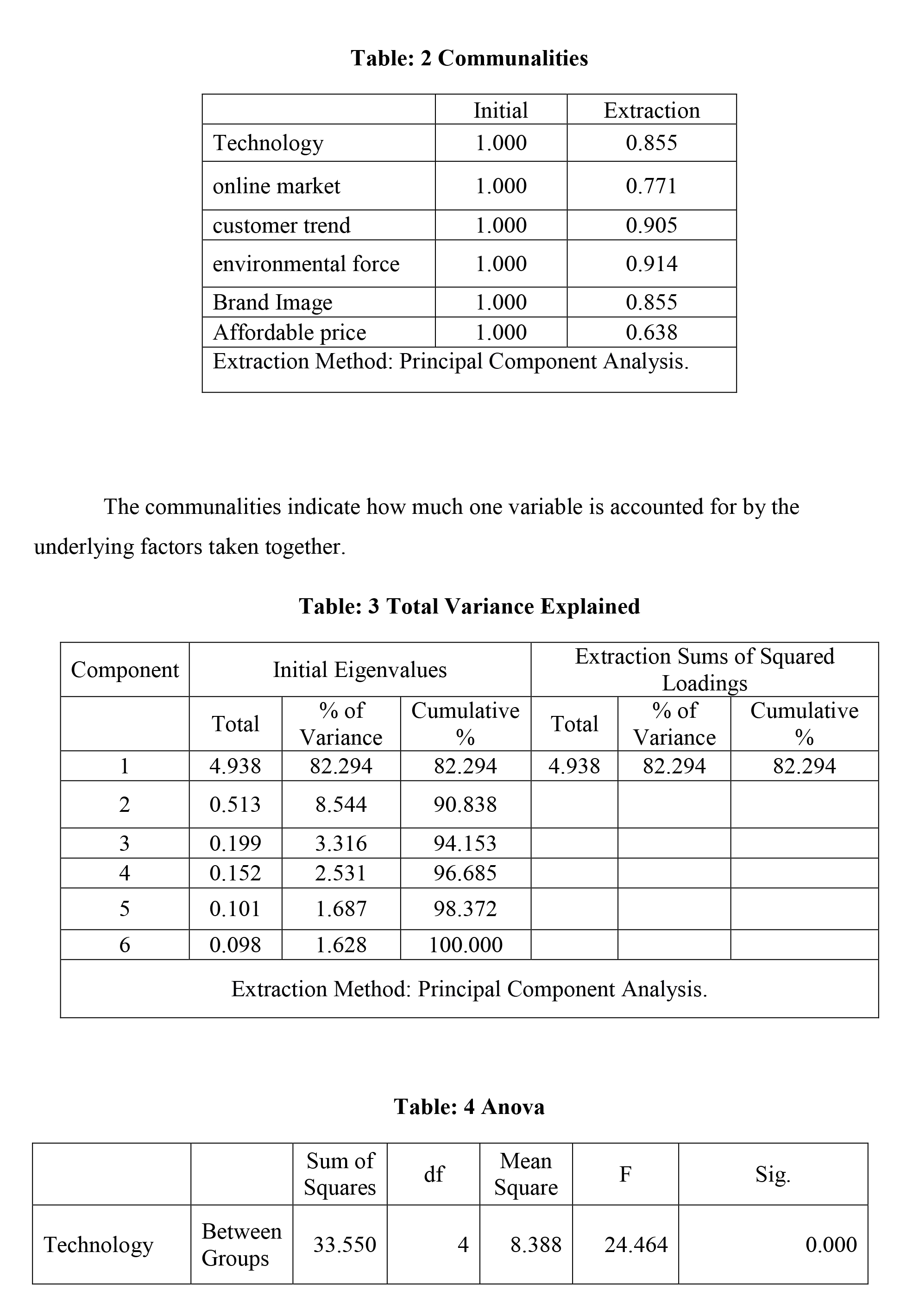
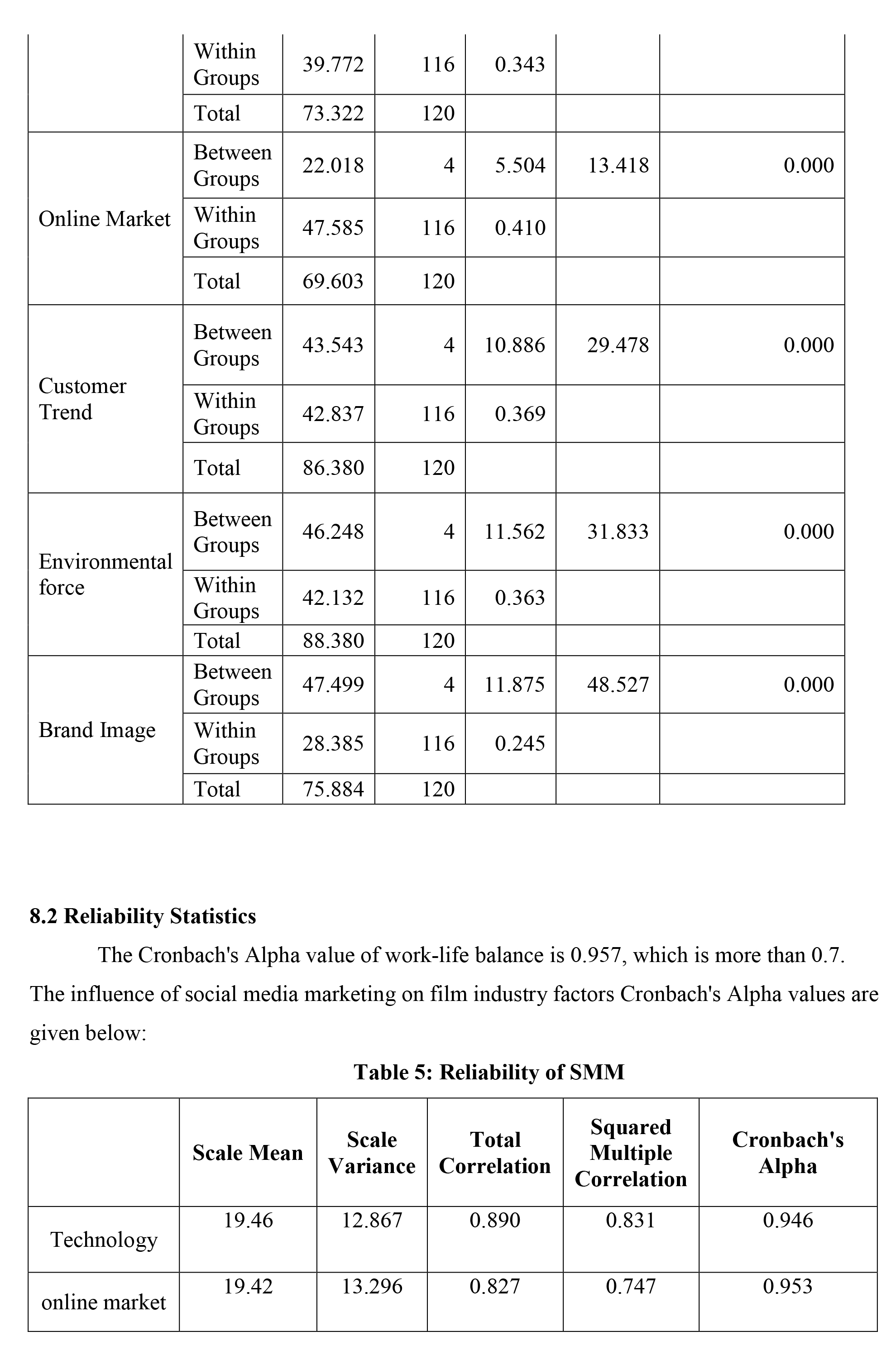
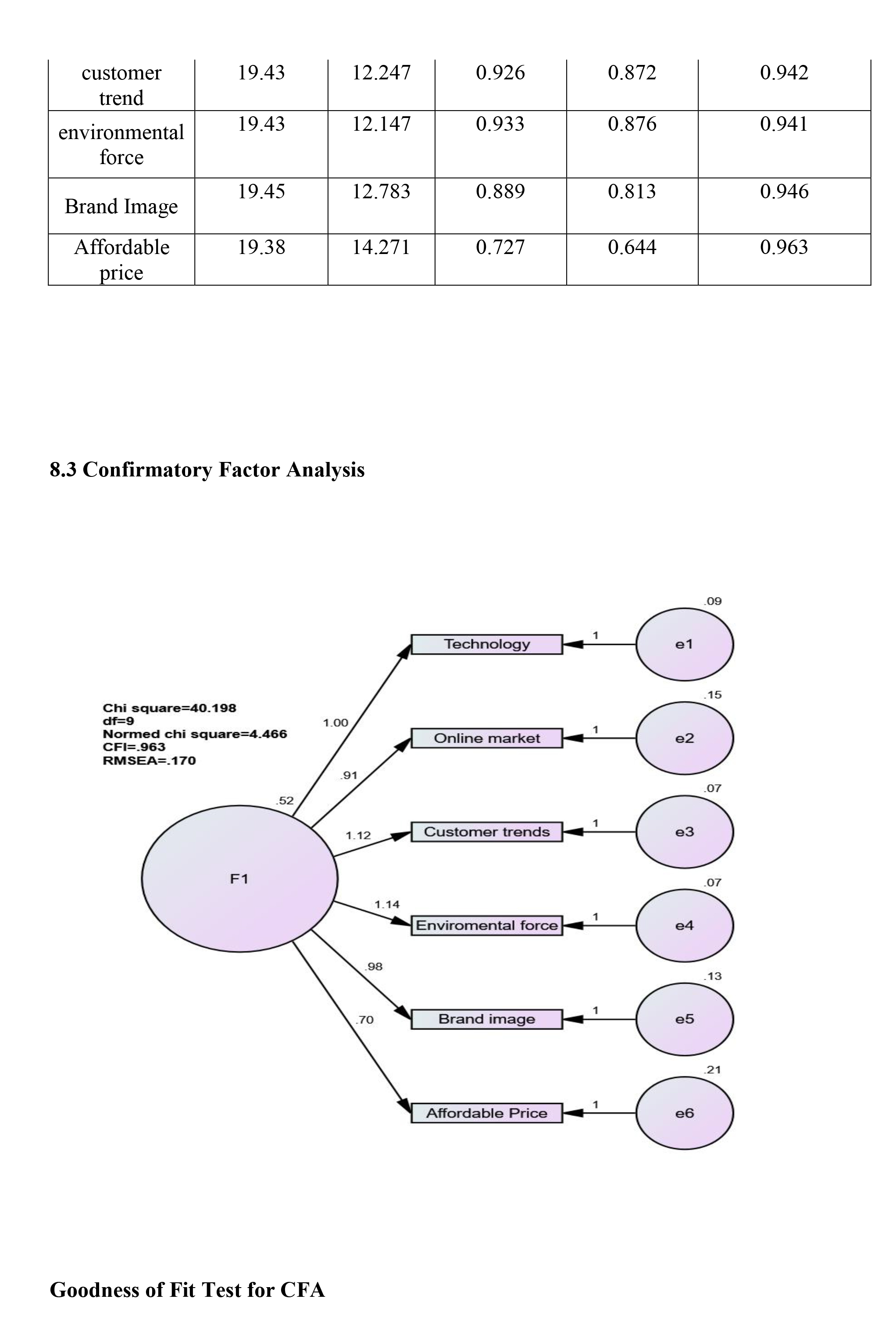
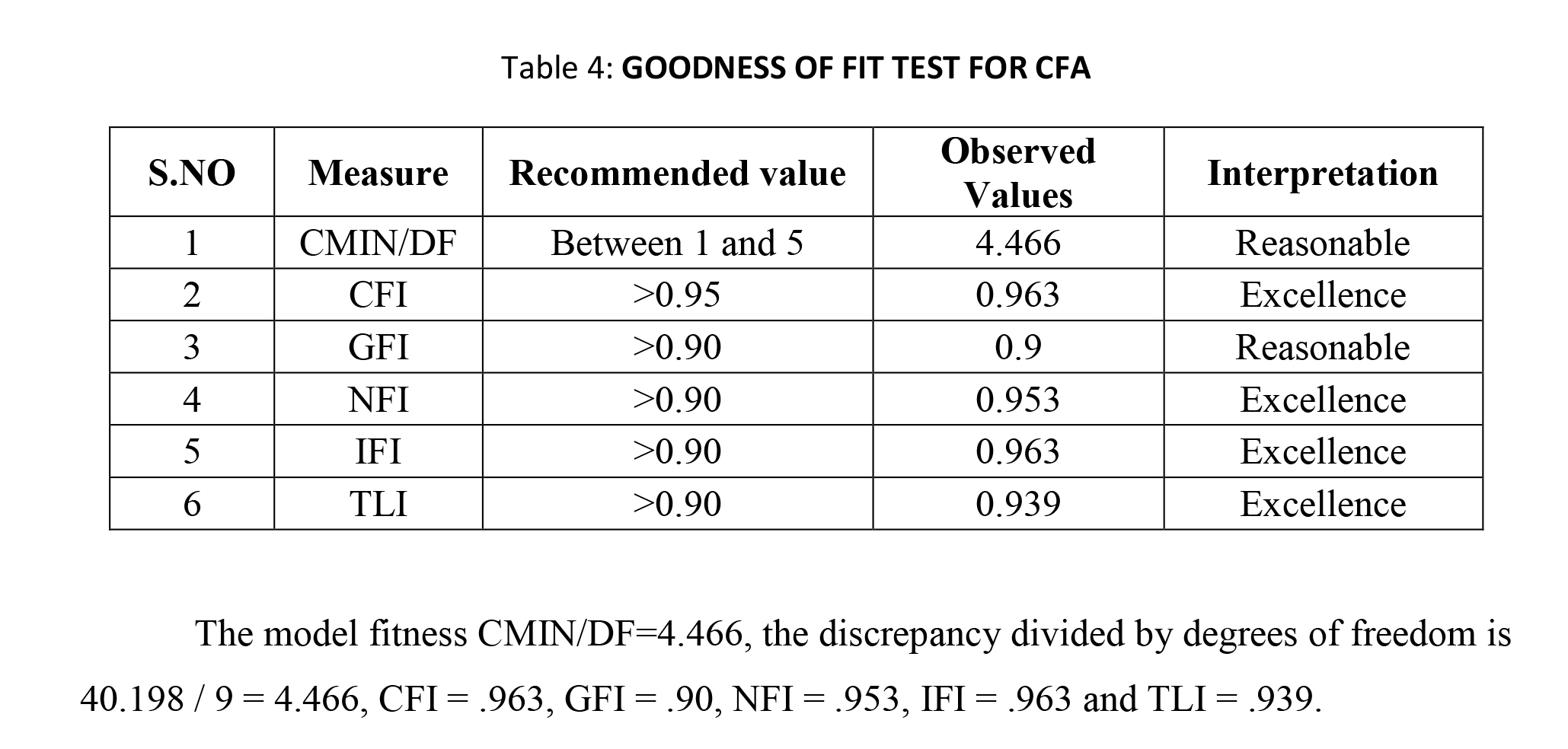
9. FINDINGS OF THE STUDY
It It has been observed that young people who work in service or company are more likely to purchase in the near future. As a result, employing social media platforms such as Facebook, Twitter, and others for marketing activities would be better to promote market. large market share presence on social media sites like as Facebook, Twitter, and YouTube, as well as a large market share.
.Men and women respondents had identical ratings and preferences for social media networks, hence no gender-based marketing approach should be developed. Regardless of age group or employment disparities between sample units, ratings and preferences for social media usage for advertising items in the market are identical. Consumer’s use of social media is influenced by their educational background, employment, and educational background. As a result, a marketing plan should be developed based on the demographics of responders in order to profit from increased market share and sales income.
CONCLUSION
Digital marketing is crucial for attracting new business, just like traditional marketing is. Since most companies in the automotive sector earn the bulk of their revenue from new business, it is extremely important for success, new business. When it comes to the automotive sector, social media gives not only a platform to communicate with potential or present consumers, but you can also use it to advertise a new car release, deliver the latest news about your company, or promote a car sale. Because the bulk of social media networks are free, and practically everyone uses at least one of them, it would be silly not to take advantage of them and include them into your digital marketing plan. There are also additional social media platforms, like Instagram and Twitter that offer free company promotion and are growing in popularity among people. It runs the risk of losing out on a lot of potential revenue if you don't build up a strong social media presence.
REFERENCES
- Adetunji, R. R., Rashid, S. M., & Ishak, M. S. (2018). Social media marketing communication and consumer-based brand equity: An account of automotive brands in Malaysia. Jurnal Komunikasi: Malaysian Journal of Communication, 34(1), Page No: 1–19
- Asghar, Z., Ali, T., Ahmad, I., Tharanidharan, S., Nazar, S. K. A., & Kamal, S. (2019). Sentiment Analysis on Automobile Brands Using Twitter Data. Communications in Computer and Information Science, 932, Page No: 76–85
- Devi, S. (n.d.). Social Media As A Tool Of Marketing : A Study Of Indian Automobile Industry.
- Joo, Y., & Yoo, G. (2021). Study on Automobile Culture of Developed and Emerging Countries in Asia Using Text Mining Analysis on Social Media. International Journal on Advanced Science, Engineering and Information Technology, 11(1), Page No: 51–56.
- Svobodová, L., Černá, M., Olejniczak, J., & Bednarska-Olejniczak, D. (2019). Utilization of Social Media Network in Automotive Industry in the Czech Republic: case-study. Proceedings of the International Scientific Conference Hradec Economic Days 2019 Part II., 9, Page No: 370–381.
- Alamu, O. (2021). Social Media Marketing in the Yorùbá Video Film Industry. Yoruba Studies Review, 2(2).
- Kumar, R., V. P., Thirulogasundaram, and R. Murugesan. 2015. Customers clutch decisions through WOM/Viral marketing communication. International Journal of Science Technology and Management 4(2): Page No: 2394-1537.
- Kwon, J., and C. Vogt. 2008. Identifying the effects of cognitive, affective, and behavioral components on residents’ attitudes toward place marketing. Proceedings of the 2008 North-eastern Recreation Research Symposium.
- Liao, Z., Li, Z., & Zhang, Q. (2021). The Pareto Optimal Analysis of the Marketing Path of Movie Works in the Streaming Media Ecosystem. Finance and Market, 6(1), Page No : 87–98.
- Lis, B., and J. Schulz. 2014. Determinants of passing on viral messages empirical analysis of a viral marketing campaign on Facebook. Online Journal of Communication and Media Technologies 4(4): Page No: 14-33.
- Martí, P., L. Serrano-Estrada, and A. Nolasco-Cirugeda. 2019. Social media data: Challenges, opportunities and limitations in urban studies. Computers, Environment and Urban Systems 74: Page No: 161-174.
- Miller, R., and N. Lammas. 2010. Social media and its implications for viral marketing. Asia Pacific Public Relations Journal Page No: 11: 1-9.
- Morra, M.C., F. Ceruti, R. Chierici, andA. Di Gregorio. 2018. Social vstraditional media communication: brand origin associations strike achord. Journal of Research in Interactive Marketing 12(1): Page No: 2-21.
- Mutiara, S., Hermansyah, T., & Nasichah, N. (2023). Strategi Komunikasi Pemasaran Terpadu pada Promosi Film Nanti Kita Cerita Tentang Hari Ini. JKOMDIS Jurnal Ilmu Komunikasi Dan Media Sosial, 3(1).
- Suntornpithug, N., & Shuva, S. (2019). An Empirical Study Investigating the Influence of Social Media Dynamics in Feature Film on Gross Revenue and Profit. Marketing Management Association Annual Conference Proceedings.
- Trandafilović, I, V. Pašić, and S. Perunović. 2013. The research of cognitive and affective behaviour during shopping. Facta Universitatis Series: Economics and Organization 10(2): Page No: 147-164.
- Tiaratama, E, N. A. Indra, and Pamungkas 2017. The role of generation Y as talkers in generation Z in creating word of mouth (WOM) in a film “Ada Apa dengan Cinta 2” (AADC2). E-Proceeding of Management 4(1): Page No: 1-12.
- Trivedi, J. 2017. The effect of viral marketing messages on consumer behavior. Journal of Management Research 17(2): Page No: 84-98.
- Wang, K., & Li, G. (2022). The Impact of Big Data Technology on the Scale Management of China’s Animation Film Industry. Mathematical Problems in Engineering, 2022, Page No: 2–13.
- Yoon, Y., Deng, R., & Joo, J. (2022). The Effect of Marketing Activities on Web Search Volume: An Empirical Analysis of Chinese Film Industry Data. Applied Sciences (Switzerland), 12(4), Page No: 2–10.
